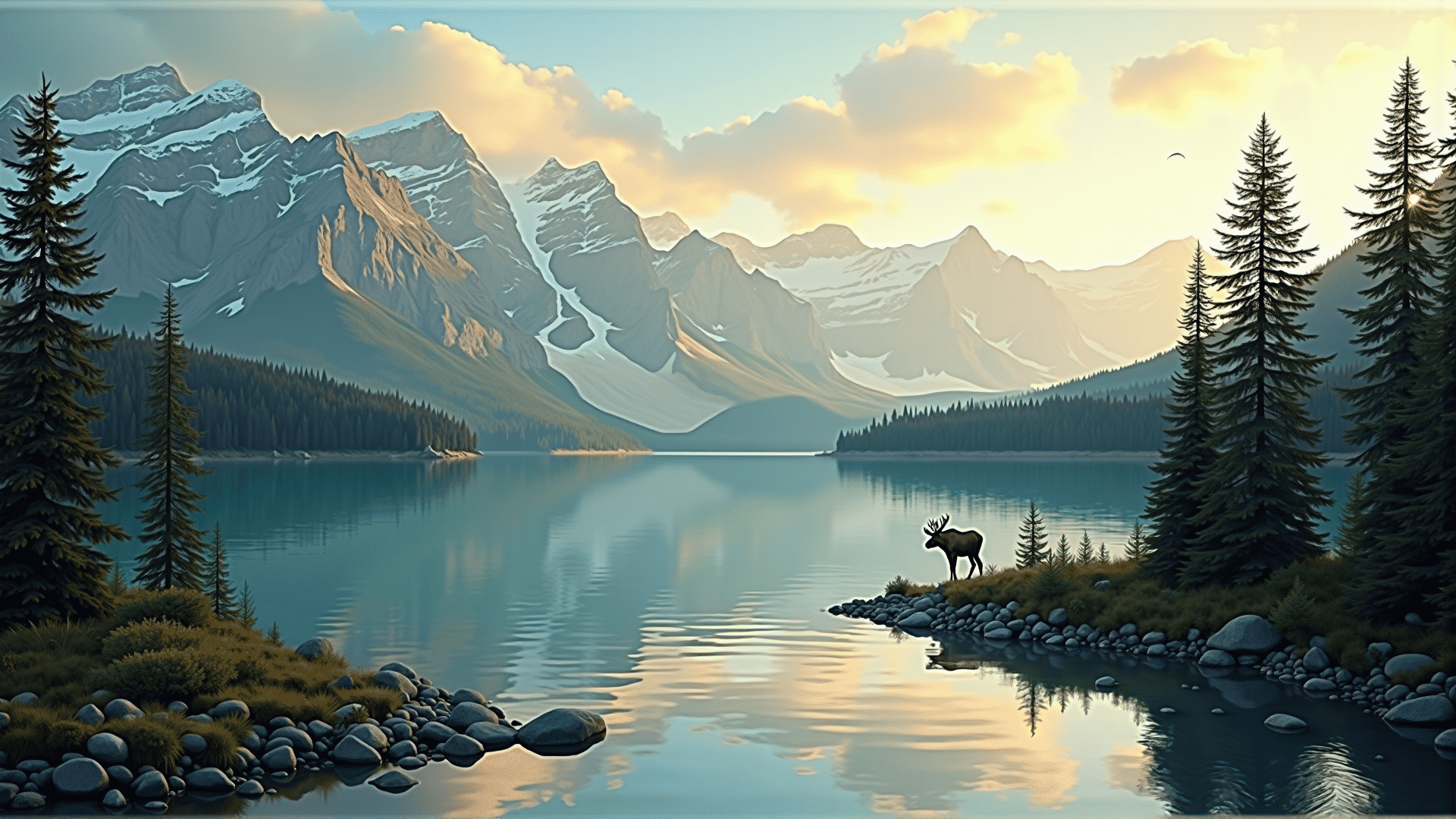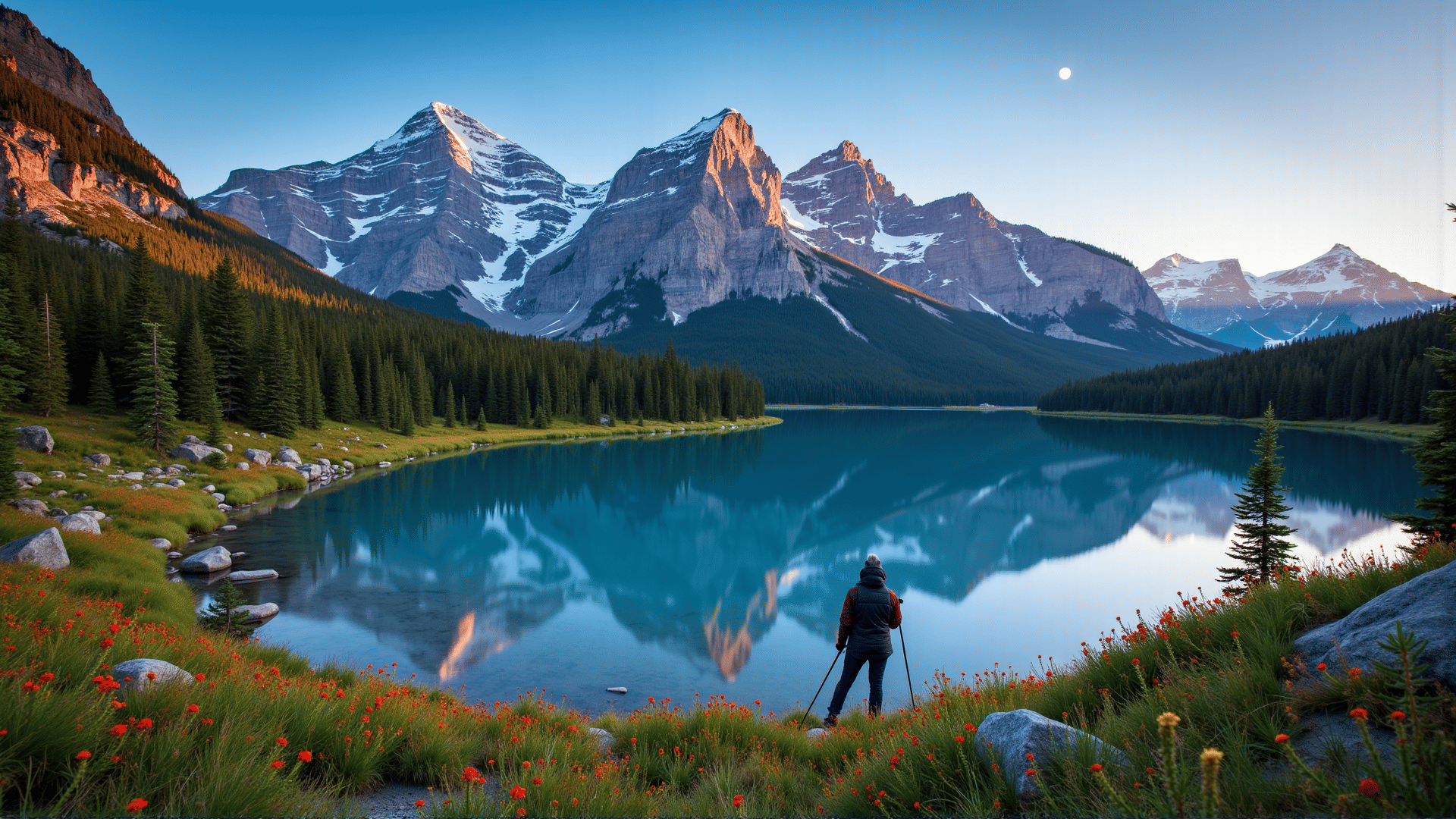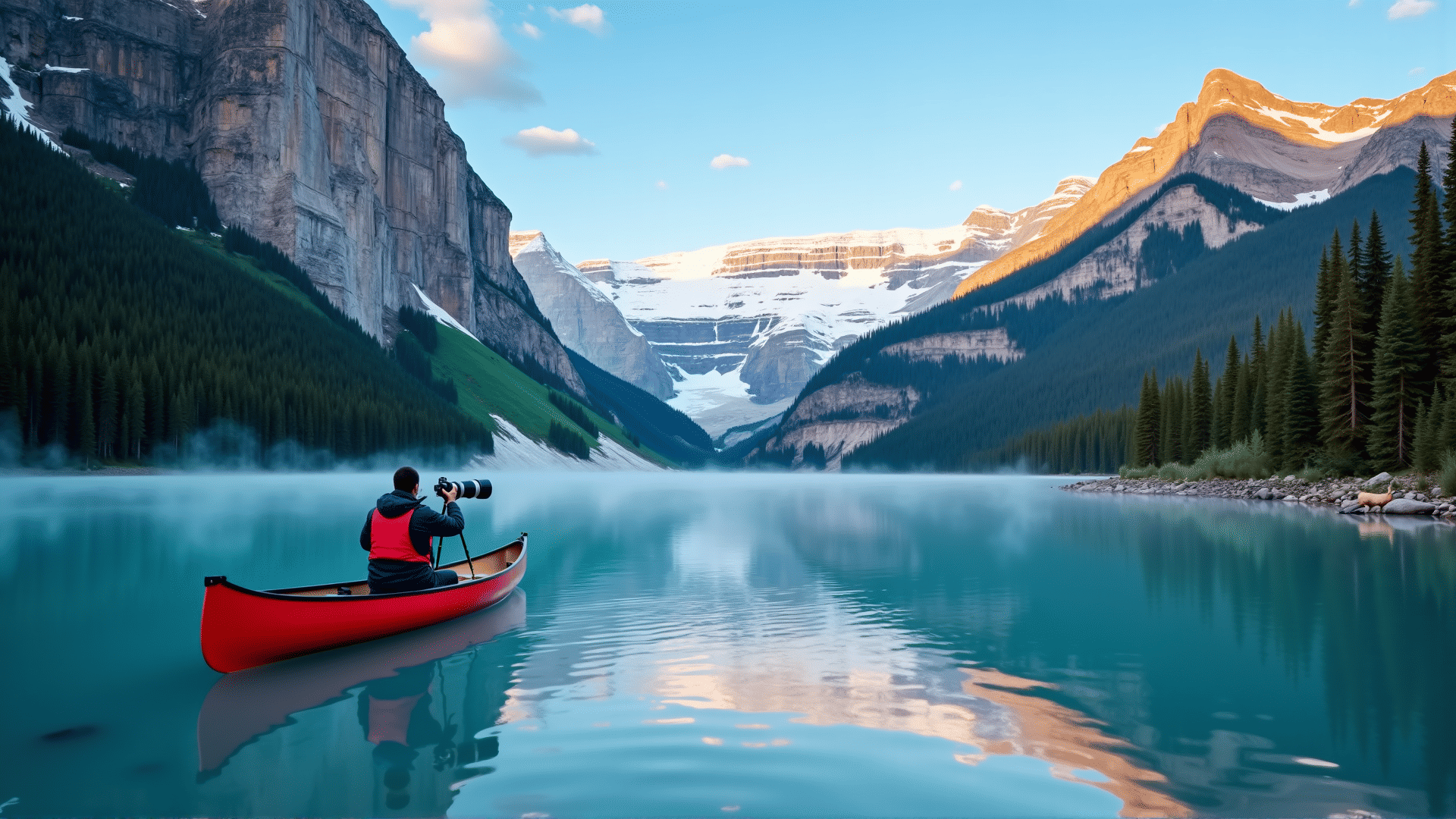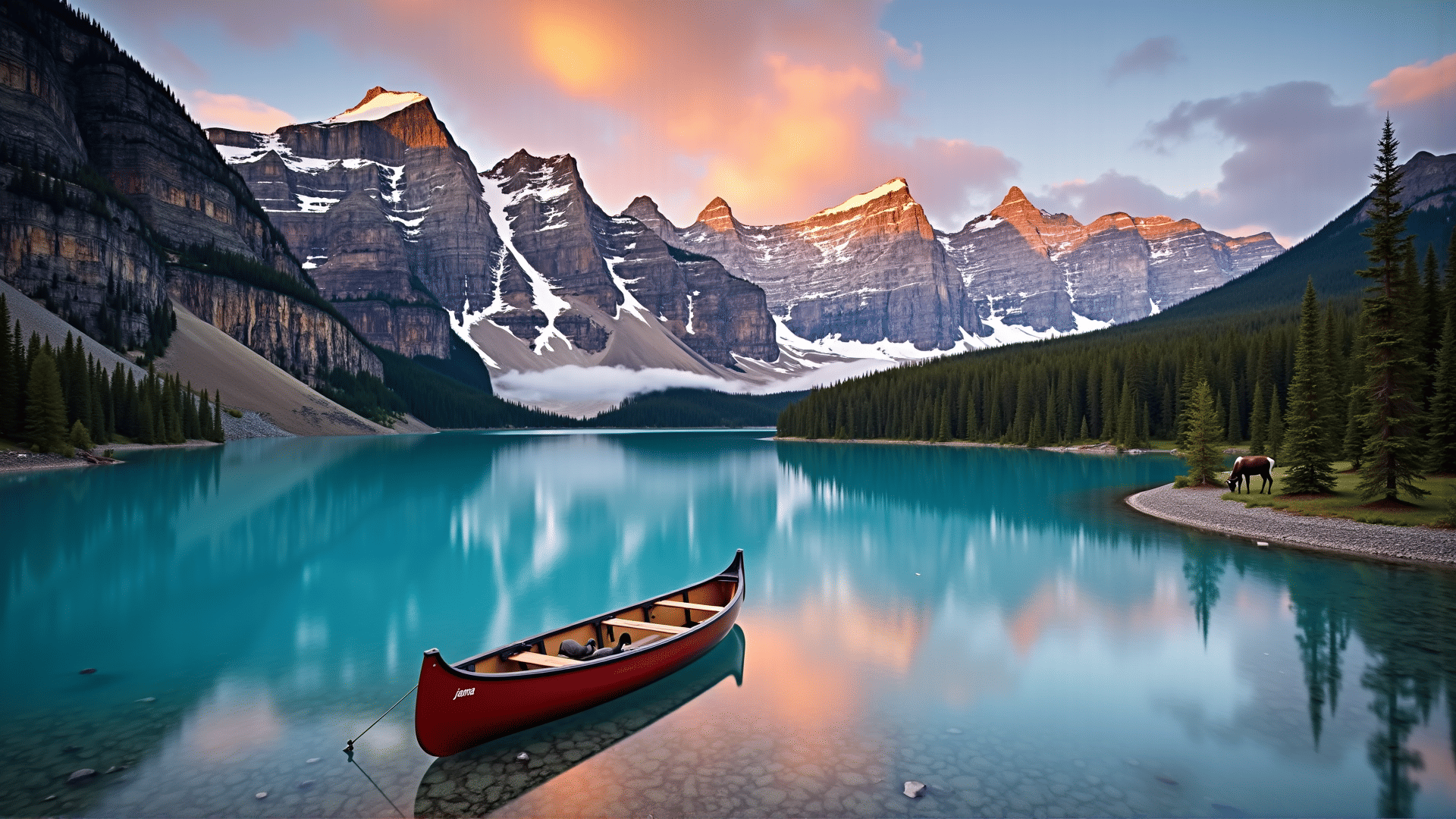10 Essential Landscape Photography Tips for Stunning Mountain Images

The majestic beauty of mountains has captivated photographers for generations. From the dramatic peaks of the Canadian Rockies to the serene alpine lakes, mountain landscapes offer endless opportunities for breathtaking photography. However, capturing the true essence and grandeur of these scenes requires more than just pointing your camera and pressing the shutter.
As a professional landscape photographer based in Banff, I've spent years refining my techniques for mountain photography. In this article, I'll share my top 10 essential tips to help you create stunning mountain landscape images that truly capture the magnificence of these natural wonders.
1. Plan Your Shoot Around the Best Light
Light is perhaps the most critical element in landscape photography, and this is especially true in mountain environments where dramatic lighting can transform an ordinary scene into something extraordinary.
The golden hours—shortly after sunrise and before sunset—offer warm, directional light that creates depth and dimension in mountain landscapes. During these times, the low angle of the sun casts long shadows that emphasize the texture and contours of the mountains, while the warm golden tones add a magical quality to the scene.
Pro Tip: Use Apps for Planning
Apps like PhotoPills, The Photographer's Ephemeris, or PlanIt Pro can help you predict exactly where and when the sun will rise or set relative to your chosen landscape. This allows you to plan your shoot with precision, ensuring you're in the right place at the right time.
Don't overlook blue hour (the period just before sunrise or after sunset) when the sky takes on a deep blue hue that can create a beautiful contrast with mountain silhouettes. And while golden hour gets most of the attention, don't dismiss midday shooting entirely—especially on days with dramatic clouds or when photographing reflections in alpine lakes.
2. Master Composition for Mountain Landscapes
Strong composition is the foundation of any great landscape photograph. When photographing mountains, consider these composition techniques:
Use Foreground Elements
Including interesting foreground elements—such as wildflowers, rocks, or a winding stream—creates depth and leads the viewer's eye into the scene. This three-dimensional approach (foreground, middle ground, background) gives your images a more immersive quality.
Apply the Rule of Thirds
Rather than placing the mountain peak or horizon line in the center of your frame, position these elements along the rule of thirds grid lines. This creates a more balanced and visually appealing composition.
Look for Leading Lines
Rivers, trails, ridgelines, or rows of trees can serve as leading lines that guide the viewer's eye toward the main subject. In mountain photography, these lines can create powerful compositions that emphasize the scale and grandeur of the landscape.
Consider Scale
Including elements that provide a sense of scale—such as a person, tree, or cabin—helps viewers appreciate the true magnitude of the mountains. Without these reference points, it can be difficult to convey just how massive these landscapes really are.
3. Use the Right Filters
Filters are invaluable tools for landscape photography, helping you overcome challenging lighting conditions and capture scenes as your eye perceives them.
Polarizing Filter
A circular polarizing filter is perhaps the most essential filter for mountain photography. It reduces glare and reflections, deepens blue skies, enhances the saturation of foliage, and helps cut through atmospheric haze—all of which are common challenges in mountain environments.
Graduated Neutral Density (GND) Filters
The extreme contrast between bright skies and shadowed valleys in mountain landscapes can exceed your camera's dynamic range. GND filters help balance this contrast by darkening only the sky portion of your image, allowing you to capture detail in both highlights and shadows.
Neutral Density (ND) Filters
ND filters reduce the amount of light entering your lens, allowing for longer exposures even in bright conditions. This is particularly useful for creating silky-smooth effects in waterfalls or streams that might be part of your mountain composition.
Pro Tip: Filter Systems
Consider investing in a square filter system rather than screw-on filters. These systems allow you to stack multiple filters and precisely position graduated filters for optimal effect.
4. Optimize Your Camera Settings
Understanding how to configure your camera for landscape photography will help you achieve the sharpest, most detailed images possible.
Aperture
For maximum depth of field, where both foreground and distant mountains are in sharp focus, use a narrow aperture between f/8 and f/13. Going beyond f/16 can introduce diffraction that reduces overall sharpness.
ISO
Keep your ISO as low as possible (typically 100 or 200) to minimize noise and maximize image quality. This is especially important for large prints where any noise will be more noticeable.
Shutter Speed
With your camera on a tripod, shutter speed is less critical unless you're photographing moving elements like clouds or water. In those cases, experiment with different shutter speeds to achieve your desired effect—from freezing motion to creating dreamy, long-exposure effects.
Focus Stacking
For scenes with extreme depth, consider focus stacking—taking multiple images focused at different distances and blending them in post-processing. This technique ensures tack-sharp focus throughout your entire composition.
5. Embrace Changing Weather Conditions
Mountain weather is notoriously unpredictable, but these changing conditions often create the most dramatic and unique photographic opportunities.
Don't pack up your gear when clouds roll in—these can add drama and interest to your images. Partial cloud cover can create spotlight effects as shafts of light illuminate portions of the landscape. Low-hanging clouds or fog can create mystical scenes as mountain peaks emerge from the mist.
Some of the most compelling mountain photographs happen during or immediately after storms when the atmosphere is clear and light quality is exceptional. The combination of fresh snow, dramatic clouds, and golden light can produce truly spectacular images.
Safety First
Always prioritize safety when photographing in mountain environments, especially during changing weather. Check forecasts, tell someone your plans, and be prepared to turn back if conditions become dangerous.
Share This Article
Ready to Improve Your Photography Skills?
Book a photography workshop with Paul Zizka and learn how to capture stunning mountain landscapes in person. Limited spots available for 2025 workshops in Banff National Park.
Book a Workshop


